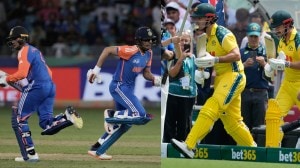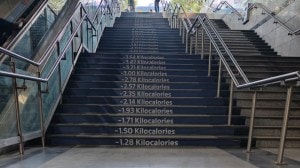Why Enron is such bad news for Maharashtra
MUMBAI, DECEMBER 25: The good news first. While not a day passes without top Maharashtra politicians threatening to cancel the second phas...

MUMBAI, DECEMBER 25: The good news first. While not a day passes without top Maharashtra politicians threatening to cancel the second phase of the Enron-owned Dabhol Power Company’s (DPC) power project, DPC’s costs are actually much lower than the oft-touted Rs 7.8 — the average price the Maharashtra State Electricity Board (MSEB) pays DPC is Rs 4.3 per unit of power.
The reason why Dabhol’s bill for July indicates a cost of Rs 7.8 is a statistical absurdity. You see, the government had guaranteed to buy 90 per cent of Dabhol’s power, but since it bought a lot less — just 33 per cent in July — it had to pay DPC a committed fee for even the power it didn’t buy. This made the average price paid look higher.
Had it bought 90 per cent of the power, the price would be in the region of Rs 4.3 a unit. Besides, the fact that crude oil prices rose from $15 a barrel in May last year to $33 in September also resulted in its energy costs rising by Rs 1.74 per unit of power.
That’s the good news. The problem is there’s a lot of bad to follow. Dabhol’s costs are not Rs 7 a unit now, but they’re likely to get there in a few years. More important, DPC’s project will make MSEB bankrupt within just a year or so. MSEB, for instance, has a total income of just Rs 10,800 crore but expenses of Rs 14,400 crore. So far this year, it has spent Rs 1,200 crore to buy DPC power, but in 2002 when DPC’s phase II is on stream, it will need Rs 7,940 crore to buy its power (at current prices) — that’s close to 80 per cent of its revenue!
Not surprisingly, there are a host of petitions still pending against DPC.One filed at the Maharashtra Electricity Regulatory Commission (MERC), for instance, by S.R. Paranjpe and Pradyumna Kaul is to be heard on December 29. It pleads that the MERC direct MSEB to stop purchases altogether from DPC as this power is not needed! The same duo, incidentally, studied MSEB’s demand patterns last year and filed a petition arguing that MSEB be asked to follow merit-order purchases — it had to buy from the cheapest sources first. In May, MERC ruled that MSEB could not buy more than 3044 mn units of power from DPC (roughly half its capacity), and it could not spend more than Rs 1,729 crore on this.
Another activist, P.B. Samant’s Supreme Court case is to come up on January 8. This argues that dollar-denominated tariffs (such as Enron’s) are illegal.
The crux of the problem is the manner in which Dabhol’s costs were structured in 1993 when the project was first approved. In 1996, when it was first scrapped and then re-negotiated by the BJP-Shiv Sena government in Maharashtra, only cosmetic cost cuts were made.
Gold-plated plants?
People like Paranjpe, and even the Central Electricity Authority have, for long, argued DPC is a gold-plated plant. At around Rs 4.5 crore a MW, DPC’s a lot more expensive than NTPC’s Bawana (Rs 1.9 crore a MW), MSEB’s Uran (under Rs 2 crore in 1998), TEC’s units 6 and 7 (under Rs 2 crore in 1997). Even BSES’ Dahanu (Rs 2.4 crore in 1996) and MSEB’s Chandrapur (Rs 2.5 crore in 1998) are cheaper though coal-based plants generally cost 20 per cent more than liquid-fuel ones. Interestingly, even NTPC’s Kayamkulam, which DPC uses to show its power costs are not too high, has a capacity charge of Rs 1.25 per unit as against DPC’s 1.88.
Dollar Disaster
Since much of the project’s tariffs are dollar-denominated, every time the rupee depreciates, the tariff goes up. It was Rs 32.8 in 1993 but is close to Rs 46 today. So, the tariff has gone up by 40 per cent on this count alone.
Choking capacity charges
The total cost of power includes the capacity charge, or the fee to cover the fixed costs, and the cost of fuel. In almost all power plants, the capacity charge gets reduced over a period of time. Let’s say it’s Rs 2 in year 1. As the loans for the project are repaid, the interest burden (part of the capacity charge) goes down. Conversely, another component of capacity charge, maintenance expenses, go up with time. On balance, by year 15, say, the capacity charge could go down to anywhere between Rs 1.6 to 1.9. In Enron’s case, however, the capacity charge goes up.
Originally, in phase I of the project, MSEB agreed to an annual hike of 4 per cent in dollar terms — so, if the rupee depreciates 10 per cent in a year, the capacity charge would go up by 14 per cent! When the project was re-negotiated, Enron agreed to keep the capacity charge constant but changed the tariff structure. As a result, the capacity charge was hiked immediately but thereafter it remained constant! DPC refuses to divulge what the new capacity charge figures are for the plant’s life, but according to experts, the returns to Enron remain the same.
So, will DPC come to the negotiating table? According to Enron India’s regional VP, Corporate Communication, Jimmy Mogal, there has been no official word so far. They have, however, been talking to the state government to get lenders to reduce rates, to get buyers like NTPC and PTC to take its power, and so on. While lenders like IDBI have slashed interest rates from 16 per cent to 11 — this will cut the cost of power by a couple of paise — the Central Government has said there’s no question of NTPC or PTC buying power which costs double or triple of that from other sources.
In which case, DPC has no option but to renegotiate since MSEB will get bankrupt very soon. One thing though: the last time Enron renegotiated its project with the BJP-Shiv Sena, it walked away with a much sweeter deal.



- 01
- 02
- 03
- 04
- 05




























